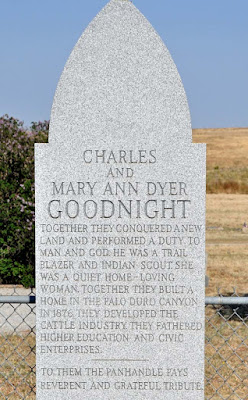In far southwest Texas is a great expanse of raw, untamed land. Within this vast area is one of America's least accessible and least visited national parks. The native Americans who once ruled this realm told a story of how the Great Creator, after forming the rest of the world, saw that he had a lot of odds and ends left over. To get rid of the excess, he simply threw it down in one big area. That area is Big Bend.
Within the 801,163 acre park, flora and fauna is as diverse as any place on the planet. There are numerous species, like the Chisos oak and the Chisos agave, that grow nowhere else on earth. It's not rare even today for botanists and zoologists to announce they have found within park boundaries a heretofore unknown plant or species of animal.
A portion of the Rio Grande River runs in the park and serves as the boundary between the United States and Mexico. Vertical walls of rock rising 1,600 feet straight up towards heaven form canyons and line much of the Mexico side. Standing beside the water with your head held back looking up toward the top of those cliffs makes one feel very small and insignificant. The enormity of the landscape relieves you of any immediate responsibilities or worries; it simply denies the importance of man-made problems.
Sometimes the sheer magnitude of nature is so incredible, so beyond imagination, expression in words is futile. You will no doubt bring back souvenirs of your visit; books, pamphlets, some rocks from the banks of the Rio Grande, and pictures. Lots and lots of pictures. The pictures will bring back memories and the memories will prove to be the greatest souvenir of all.
Within the 801,163 acre park, flora and fauna is as diverse as any place on the planet. There are numerous species, like the Chisos oak and the Chisos agave, that grow nowhere else on earth. It's not rare even today for botanists and zoologists to announce they have found within park boundaries a heretofore unknown plant or species of animal.
 |
| The twin peaks known as The Mule Ears |
Sometimes the sheer magnitude of nature is so incredible, so beyond imagination, expression in words is futile. You will no doubt bring back souvenirs of your visit; books, pamphlets, some rocks from the banks of the Rio Grande, and pictures. Lots and lots of pictures. The pictures will bring back memories and the memories will prove to be the greatest souvenir of all.
 |
| Purple Prickly Pear cactus |
 |
| The sparsely travelled road through the park. |
 |
| Cactus in bloom |
 |
| Agave plants, also known as the "Century Plant" only blooms at the end of a 25 year cycle and then dies. It looks like it came straight out of a Dr. Seuss book. |
 |
| One of the many hiking trails in the park. |
 |
| The Rio Grande River looking from Texas into Mexico. |
 |
| Santa Elena Canyon at sunset. |
 |
| Sunset in Big Bend. The end of another wonderful day. |























































